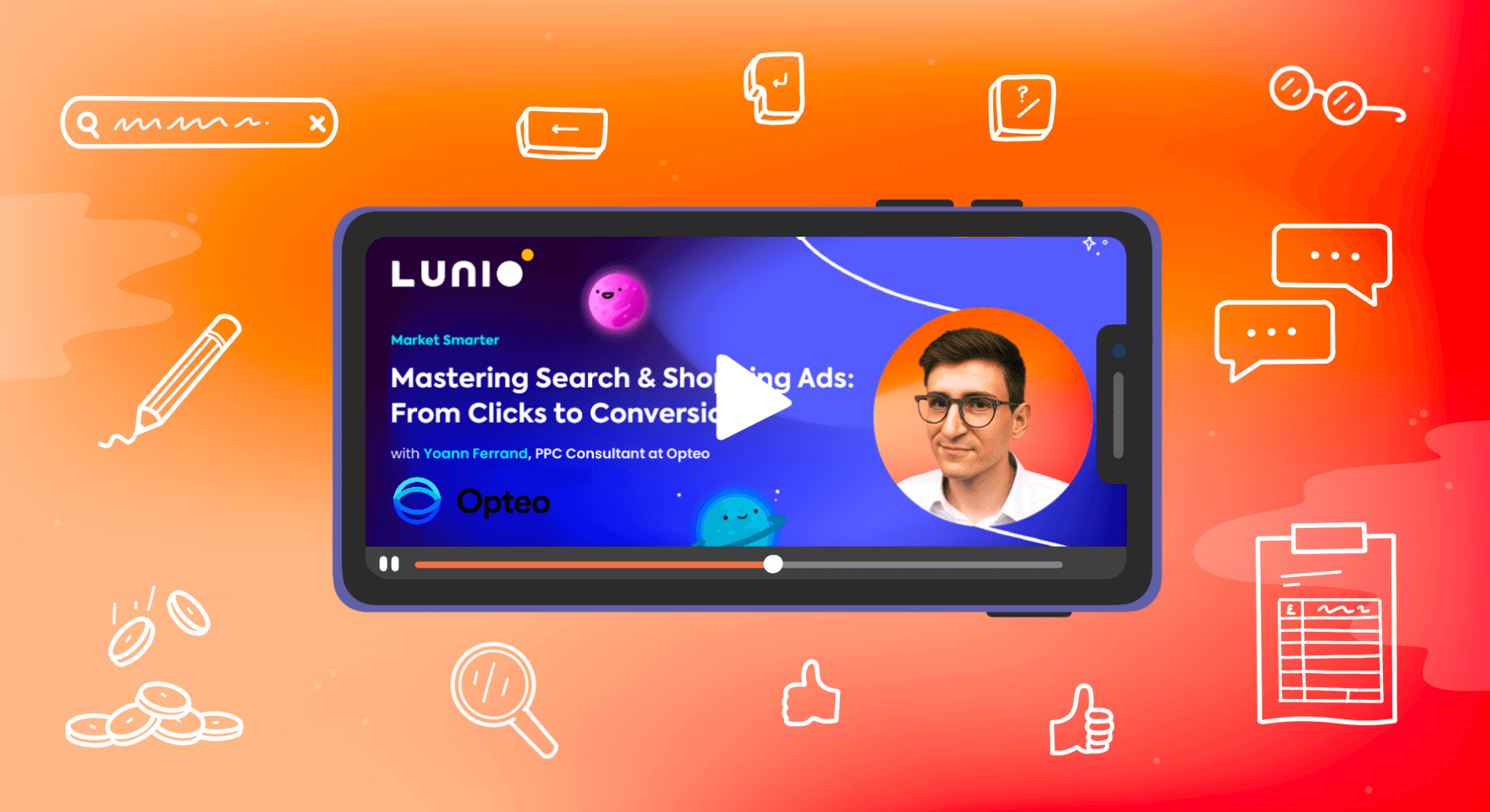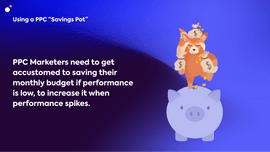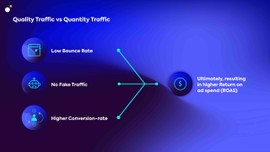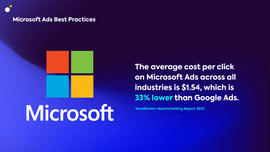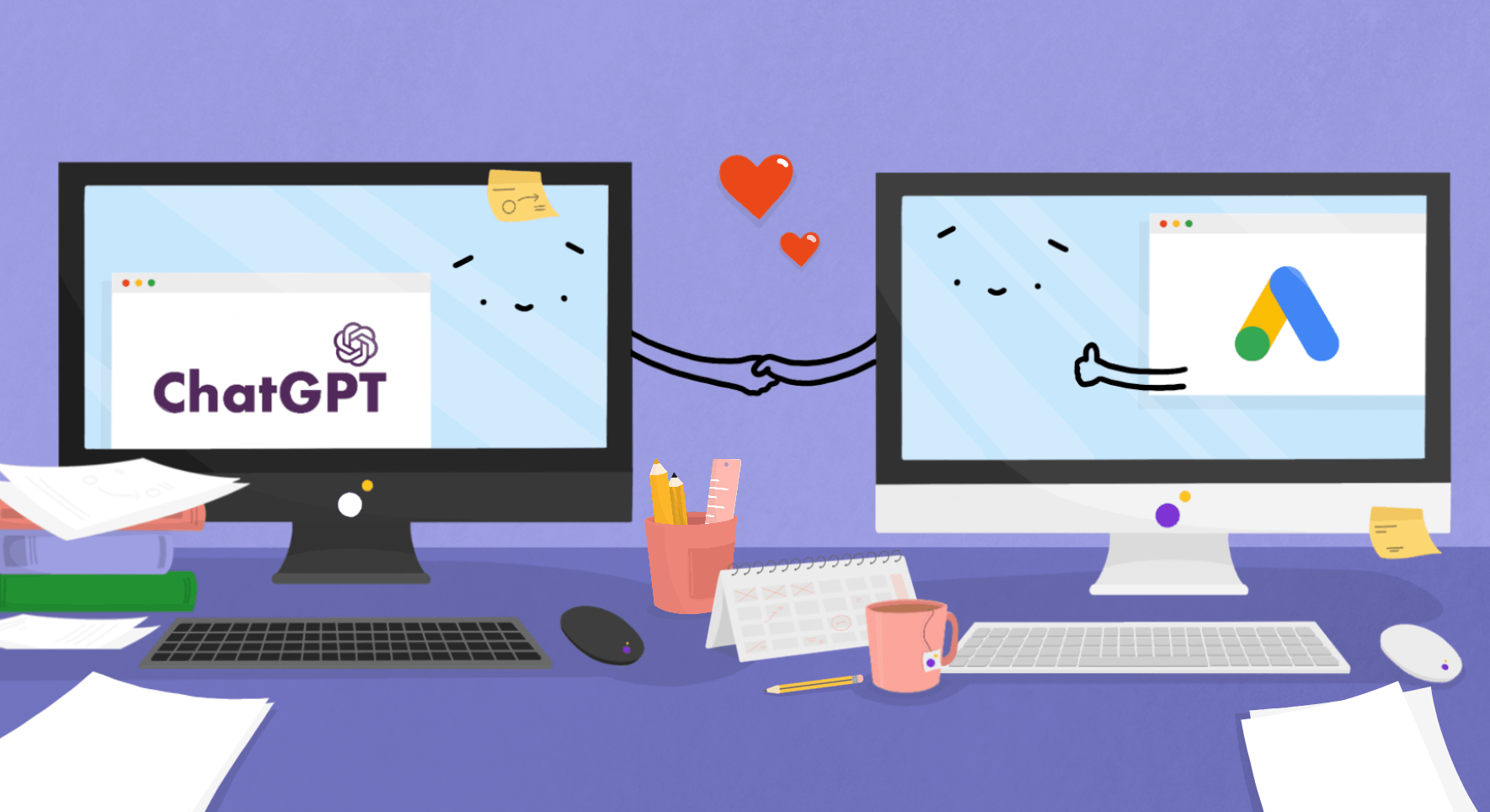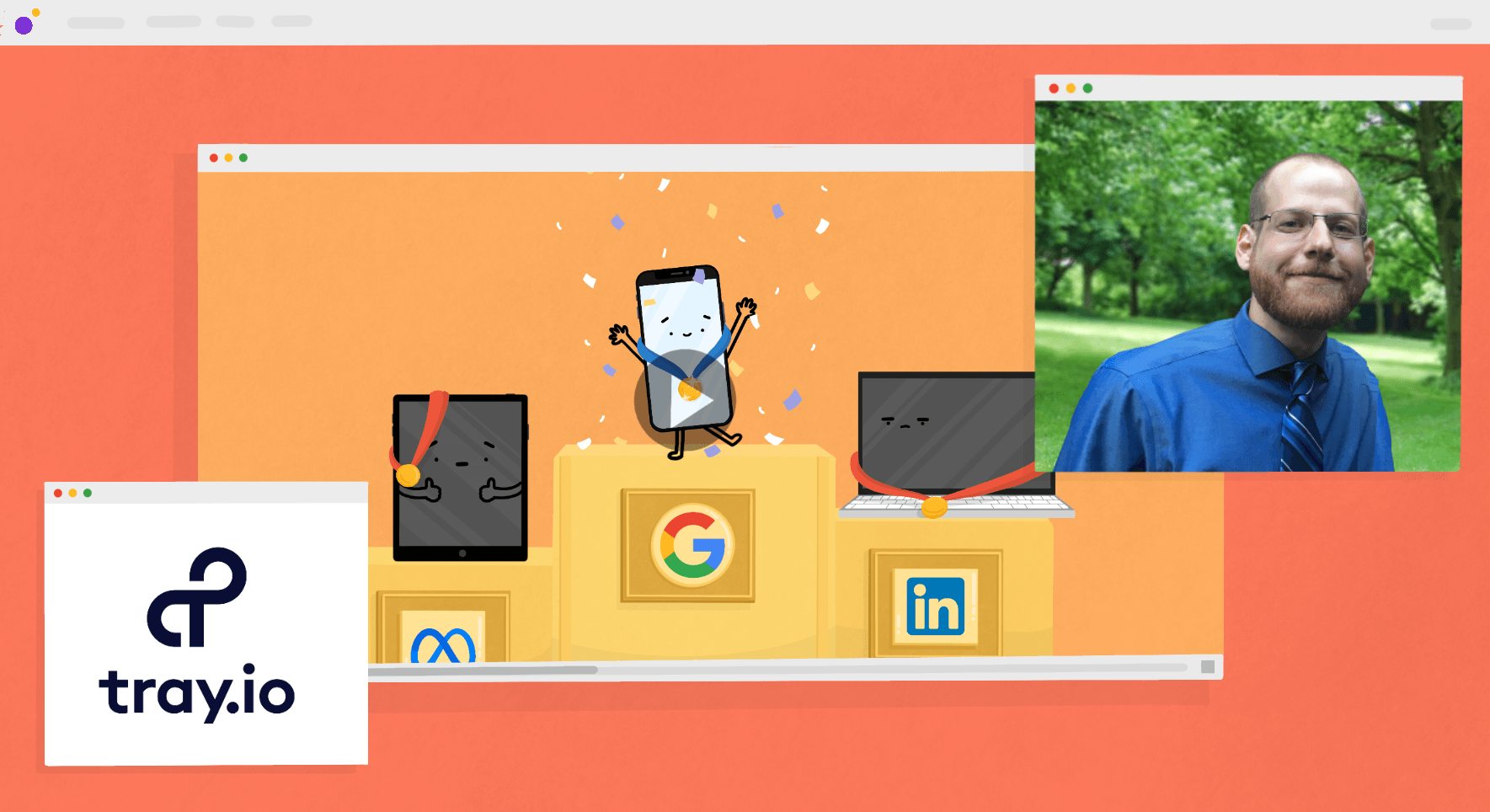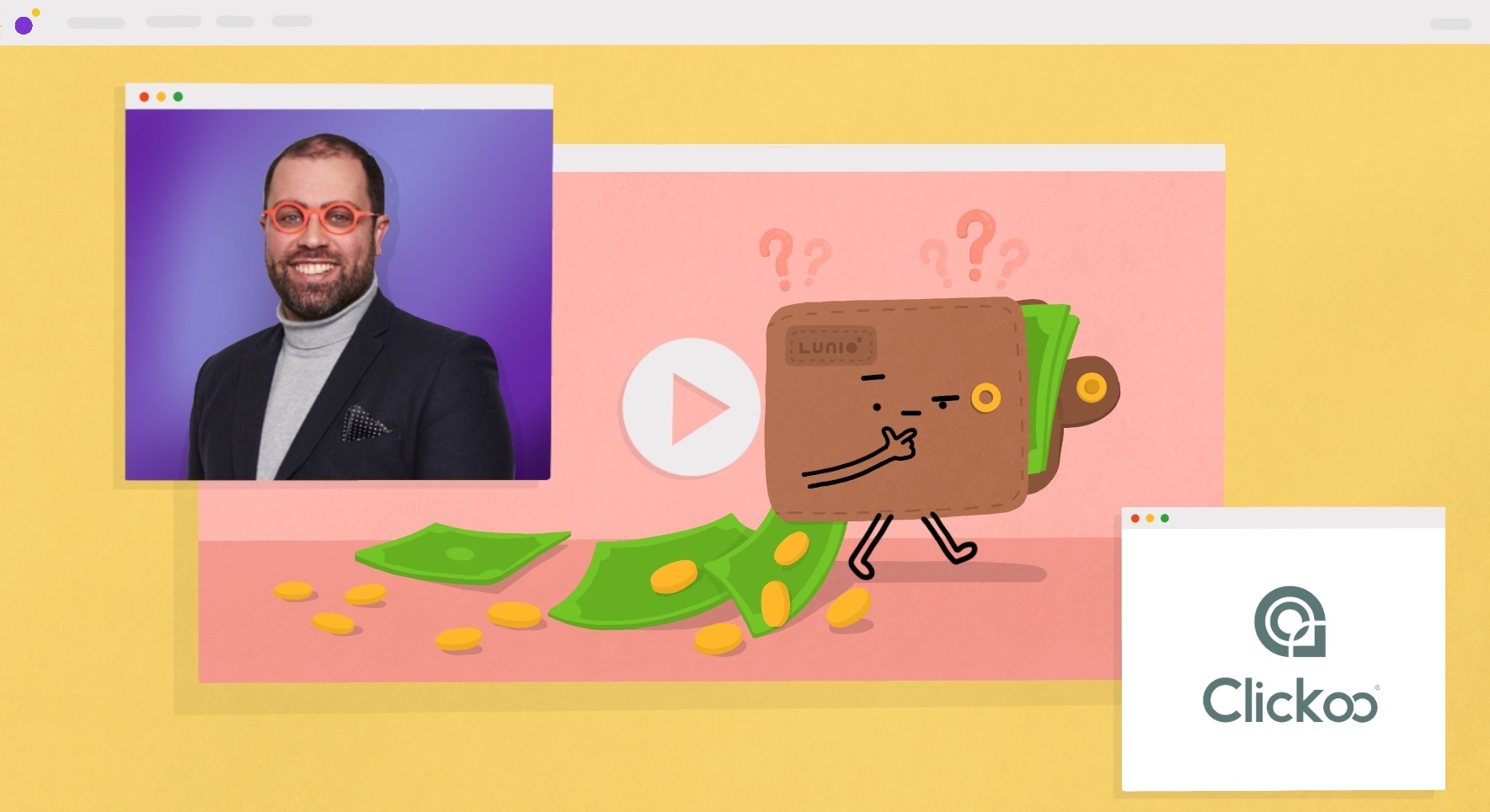Data from Hanapin Marketing revealed 71% of marketers surveyed said paid search was their most effective channel, beating all others by a considerable margin.
And that makes sense. When it comes to budget efficiency, paid inbound marketing such as paid search and shopping ads offer a more targeted approach than display and social, with higher conversion rates and better return for your ad spend.
It’s one of the few channels where you can reach your target audience while they’re actively searching for your product or service, allowing you to capitalise on immediate purchasing intent. The tricky part is showing up for the right queries at the right time.
In this first instalment of our four-part “Beat the Budget: Mastering Efficiency in Paid Media” webinar series we spoke to Yoann Ferrand, Founder of In-House Partners and PPC Consultant at Opteo. Yoann was joined by Leonardo Pizzaro, Head of Demand Generation at Lunio, and the conversation was hosted by Lunio’s Content Manager, James Deeney.
Formerly PPC Manager at Decathlon UK, Yoann helped scale the brand’s paid search strategy, ultimately reaching 10.80 ROAS. He also runs the weekly PPC News newsletter on LinkedIn where he shares the latest developments in the industry with more than 5k subscribers.
During the session, Yoann gave PPC campaign tips to optimise search and shopping ads to drive more revenue without increasing ad spend. The tips originally stemmed from our recent Performance Marketing Efficiency Playbook, and you can read Yoann’s chapter in full below.
You can also download the entire 115-page playbook for free – no form fill required:
Get Lunio’s Performance Marketing Efficiency Playbook
Webinar Recording
Webinar Timestamps
- 00:00 – Intro and agenda
- 07:40 – How to use LTV to drive long-term campaign success
- 14:45 – Why you should keep a “PPC savings pot”
- 18:27 – Navigating the law of diminishing returns on search
- 25:30 – How to focus on quality traffic over quantity traffic
- 35:45 – Best practices for investing in Microsoft Ads
- 44:05 – Q&A session with Yoann
Beat Your Revenue Targets With Lunio
Ads are for humans, not bots. Get a demo and save up to 25% of your advertising budget by automatically eliminating fake ad engagements across all paid channels.
TL;DR – Key Takeaways
- Optimising for LTV requires a shift in mindset from focusing solely on immediate ROI to considering the long-term value of each customer. To achieve this, it’s important to focus your messaging and budget on the customers that have enough volume over time.
- Ease CPA / ROAS targets on campaigns designed to reach more of your most valuable customers (e.g. app purchasers are twice more likely to stay with us)
- Import predicted LTV into other paid channels (e.g. social) to create more targeted campaigns.
- Scale back spend when factors outside your control (e.g strikes) are decreasing paid search performance. Add the money to a “PPC savings pot”.
- Use your savings pots to invest in other channels, such as paid social or programmatic, to complement your PPC efforts and reach new audiences.
- To minimise the impact of the law of diminishing returns on your spend efficiency, invest more on your landing pages to better target your existing audiences and tap into new market segments.
- When using broad match, take preventive actions such as excluding brand misspellings, competitors’ terms, or commonly confused terms to avoid low quality clicks (e.g. google ads tool could trigger google ads certification due to previous searches).
- To make the most of broad match, it’s important to give the algorithm around 2 – 3 weeks to learn and optimise before making any gut feeling decisions.
- 10 – 15% of ad spend is often wasted on bots and fake users on search. By eliminating fake ad engagements, the money saved can be reinvested to reduce your cost per lead and drive greater overall volume.
- One of the biggest pitfalls when using Microsoft Ads is to assume that it has the same capabilities and features as Google Ads. For example, its CPA bidding strategies are less powerful. So you can’t approach both platforms in the same way.
- Microsoft Ads has a much lower search volume than Google Ads, so it will take more time to gather enough conversion data to make informed decisions. A decision that will take 2 weeks in Google Ads may take 7 weeks in Microsoft Ads.
- Never import your entire Google Ads inventory into Microsoft Ads. Start small and only import your best performing keywords from Google Ads to maximise ROAS.
10 PPC Campaign Tips for Search & Shopping Ads
The 10 tips below from Yoann will help you optimise your paid search and shopping ads to drive more revenue without increasing your budget.
1. Set Clear Goals for Campaign Success
When it comes to running successful paid search and shopping ad campaigns, it’s essential to focus on what matters most. That means tracking real business KPIs like leads, conversions, and profits. Without proper tracking and analysis, you risk making decisions based on incomplete or inaccurate data.
To get the most out of your campaigns, implement a robust data warehouse and tracking system. That means using tools like your CRM and Google BigQuery to collect and analyse customer data. By doing this, you can get a better understanding of your target audience and a complete picture of how they interact with your ads and website.
Note: To learn how to move your Google Ads data into Google BigQuery, check out this guide.
Ensure your data is clean
One of the biggest pain points that marketers often face is not having clean data. This can lead to incorrect conclusions about the performance of your campaigns. Therefore, it’s crucial to ensure your data is clean before sending it back to Google Ads.
Here are best practices to follow:
- Establish a process for cleaning and organising your data. This might involve working with a data analyst or scientist who can help you identify and correct any issues.
- Remove fake or irrelevant data points manually or through a data verification solution.
- Update your product value with accurate Lifetime Value (LTV) figures.
Once you’re confident in the quality of your data, you can port it into your data warehouse to reliable track performance. This should give you all the data you need at your fingertips, such as ad performance, audience demographics, and more.
Why LTV is key to long-term success
It’s essential to have a deep understanding of your customers. This includes knowing whether they’re new or existing, and pairing that with data on their lifetime value (LTV), lead score, and profits.
For example, if you have data showing existing customers have a higher LTV than new customers, you may choose to focus your advertising efforts on retaining existing customers rather than acquiring new ones.
Google offers a useful optimisation tool called Customer Match, which allows you to target ads to specific customers based on their email address. This can be a powerful way to reach either entirely new or existing customers and encourage repeat purchases.
Tip: If your repeat purchase value is lower than your target purchase value, focus on excluding these through Customer Match lists and offline conversion data. That allows you to focus primarily on new customers with higher LTV.
When it comes to measuring LTV, using tools like BigQuery (ideally powered by client or sever-side) can be invaluable. By tracing GClid, you can understand the full value per keyword, which can help you identify your most profitable search queries and optimise your campaigns accordingly.
This will help you steer towards reliable long-term success, rather than continually chasing single initial purchases with no consideration of LTV.
Allocate shipping costs to individual products to understand margins
When it comes to optimising Google Shopping campaigns, it’s important to consider not just the cost of each individual product, but also the shipping and return costs associated with each item.
Transportation costs are often smaller for bulk purchases and they’re typically calculated at the basket level rather than the individual product level. So make sure to redistribute the cost across products to gain a more accurate understanding of your profit margins.
For example, let’s say that your best-selling product is a tennis ball. While this product may have a low cost per acquisition (CPA), it may be attracting customers who are also likely to purchase higher-ticket items like tennis rackets. By allocating shipping and return costs to each product, you can gain a better understanding of which products are truly driving your profits.
Many marketers managing Shopping ads inadvertently conduct flawed analyses when attempting to exclude products from their campaigns. As a result, they may overlook products that are not only profitable but also valuable to the business in terms of encouraging repeat purchases or generating higher sales volumes.
2. Get Better Results by Measuring What Matters
Before launching any campaign, aim to establish a clear and agreed-upon target with your PPC team. This will ensure that everyone is on the same page and working towards a common goal, making your campaigns more effective overall.
Make sure to educate stakeholders about your PPC process such as the importance of adding negative keywords to minimise wasted spend, or when you expect to make changes in an account and what you need from them to succeed. By doing so, you can help everyone understand the value of your work and collaborate more effectively.
PPC is like trading; if you don’t know what your goals and return are, you cannot expect the team to achieve those. If you set unrealistic targets, you won’t get anything in return. If you feed the machine incorrect data, it cannot optimise accordingly.
Lastly, ensure that your targets align with the capabilities of the platforms you’re using. For example, one way to empower your team is by utilising bid simulator data, but it’s crucial to establish achievable goals.
Google Ads assumes a flat conversion-rate with the bid simulator, which can create inaccurate expectations. Instead, aim to set goals that are realistic and achievable based on your data and historical performance.
Lots of people set goals for a certain number of transactions. But you need to dig deeper than that. When you want conversions – what’s your CPA / ROAS target?
3. Always Retain Budget Flexibility
While it’s important to predict seasonality trends, unexpected market shifts can occur, and staying adaptable can make all the difference to your campaign’s success.
Sudden changes in customer behaviour or external factors such as economic downturns or product releases can impact performance significantly. To stay ahead of the curve, follow these the best practices:
Measure seasonality effectively
Take into account not only search demand, but also conversion rates and average transaction value or profit to gain a clear understanding of how seasonal changes might affect your campaigns.
Plan your budget, but be prepared to adapt
While it’s important to plan your budget on a yearly or quarterly basis, it’s equally crucial to be ready to take advantage of opportunities as they arise. Allocate additional budget to successful campaigns or save/invest for later if times are tough.
Flexibility is key
By remaining open to change and being willing to adjust your strategy as needed, you’ll have a distinct advantage over competitors who rigidly stick to their predetermined plan.
If you’re having a bad week, save your budget for a better performing period. This mindset of creating a saving pot isn’t common. Just remember you can’t escape from quarterly targets – the money saved needs to be spent later to help hit them, you can’t sit on it indefinitely.
4. Patience Pays Off: Invest For Long-Term Growth
Marketers who treat company ad budgets as their own money are more likely to make strategic decisions that optimise spending, minimise waste, and ultimately drive greater returns for the business.
Give your inventory enough time and budget to perform effectively
This approach isn’t just about achieving maximum ROAS, it’s about providing every product with the same opportunity to succeed. That eliminates the risk of making decisions based on skewed optimisation data.
Running thousands of keywords or products with limited investment can be counterproductive. The majority won’t get the impressions or airtime they need to perform. Instead, focus on a smaller set of high-performing keywords or products that align with your business goals and invest heavily in those instead. This maximises spend in areas that have the most impact.
Be mindful of the law of diminishing returns
The law of diminishing returns in PPC refers to a point where increasing your budget for a campaign no longer generates a proportional increase in results. As the budget is increased beyond this point, the additional spending does not result in a proportional increase in conversions, leads or profit. Instead, the conversion rate starts to decline, CPCs increase, and the cost per acquisition (CPA) increases or return on investment (ROAS) decreases.
In other words, beyond a certain point, additional spending (or marginal CPA/ROAS) does not yield significant improvements in the campaign’s performance and may even result in a decrease in ROI.
Continuously monitor performance and adjust your budget accordingly to ensure you’re maximising ROI and not overspending on campaigns with limited potential.
If you have a limited inventory of a particular popular product, it may be more effective to rely on organic search or other marketing efforts to sell that product. This is because your PPC campaign can cause the product to go out of stock at a rate that makes it impossible to replenish.
5. Use Segmentation to Get the Right Message to the Right Audience
Segmentation in PPC campaigns is like having a toolbox filled with different tools for different tasks. Just as you wouldn’t use a hammer to tighten a screw, you wouldn’t use the same messaging and targeting for all audiences in your campaigns.
Audience segmentation can help you achieve your business goals by significantly improving your return on ad spend (ROAS). By segmenting your campaigns based on your business strategy and goals, you can better target specific audiences. Here are some key points to consider:
Group your campaigns based on different environments
Targeting competitors, markets with varying product fit, or audiences with different purchasing behaviours can all benefit from specific campaigns tailored to their needs.
Google’s machine learning works with averages. It won’t exclude single bad search terms or segments e.g. location or audiences. So if you include competitor keywords, which can fluctuate massively in cost, it could lead to a bidding war and wasted spend.
Use keyword clustering
Grouping keywords by topic or intent can make it easier for your team to manage and optimise campaigns. It also improves the relevance and effectiveness of your ads by ensuring that your messaging aligns with user search intent.
Ensure consistency
With the growth of expanded targeting (Broad, DSA, PMax etc), it’s important to ensure users get a consistent experience across all of your campaigns. This includes avoiding duplicate queries when possible.
Consider future goals
If you anticipate a dedicated budget or new target audience in the near future, it may be beneficial to segment your campaigns accordingly. This will allow you to focus on specific goals and allocate resources accordingly.
Optimise your data feed
For successful shopping campaigns, a detailed and relevant data feed is crucial. This includes accurate product information with optimised attributes. Proper segmentation and targeting can be achieved with categories and brands, creating specific campaigns and precise audience targeting.
6. Make the Most of Personalisation
Personalisation in advertising has become a critical aspect of driving performance for businesses. For every $1 invested in a personalised ad, you can generate $20 return on investment (ROI)
By tailoring your ads to your audience, you can increase the likelihood that they will engage with your brand and take action. It’s important to benchmark regularly, ensure your ads align with your landing pages, and audience, and test variations to find what works best.
Consider whether to personalise ads within the same RSA, different ones, or different ad groups, based on the level of change and potential impact, as well as how different the search intent is across segments. If the search intent is the same, it often makes sense to personalise within the same RSA. If it differs significantly, it’s best to personalise across different ads.
Remember to use ad experiments to validate changes and make sure that you’re testing a single variable at a time, so you can isolate the impact of each change.
7. Optimise Your Bidding Strategy
Selecting the appropriate bidding strategy can either make or break the performance of your ad campaign. A well-designed bidding strategy takes into account your goals, the competitiveness of the market, and the performance of the ad, among other factors.
Train the machine learning algorithms by providing a stable environment for your campaigns. By using data exclusions to remove noise when needed, you can ensure that your bidding strategy isn’t affected by competitors, irrelevant data, or poor performing segments.
Marketers are told to ‘trust the force’ i.e. Google’s machine learning algorithm. Blindly trusting Google to optimise for your targets is asking for problems.
Here are three important points to consider:
- Machine learning algorithms are designed to optimise towards the average, which means they may not exclude poorly performing segments or audiences. It’s essential to monitor your campaign data regularly to identify and exclude any underperforming segments or audiences. By doing so, you can prevent them from negatively impacting your bidding strategy.
- Data exclusions can be used to address conversion tracking issues such as offline import failures or incorrectly placed conversion tags. It’s recommended to exclude data for one conversion cycle in case of broken conversion tracking or exclude data until the issue is fixed for temporarily unable to upload offline conversion data. Data exclusions should not be used to address conversion fluctuations as it may negatively impact Smart Bidding performance.
- By using seasonality adjustments, you can prepare your advertising campaigns to take advantage of key moments before seeing a notable increase in performance. For example, if you’re running a holiday promotion, you may want to increase your bids a few weeks before the holiday to capture more traffic and sales.
8. Focus on Traffic Quality Over Quantity
Paid search and shopping ads are powerful tools to attract new customers and increase website traffic. However, it’s important to focus on quality traffic rather than simply generating clicks that will never convert.
Understand your buyer’s search behaviour
By monitoring your top-converting search queries, not just keywords, you can ensure that you don’t miss out on valuable traffic and conversions.
For example, let’s say you’re running a Google Ads campaign for a men’s grooming brand. Your keyword list includes “beard oil,” “razor,” and “shaving cream.”
After analysing your best-performing search queries, you realise that “beard oil for sensitive skin” and “best razor for sensitive skin” are driving the most conversions. By optimising your ads and landing pages for these search terms, you can increase conversion rates.
Strike a balance between cost and opportunity
Broad match allows advertisers to reach a wide audience and capture more traffic, but it can also lead to irrelevant clicks and wasted spend if not used strategically.
While some advertisers may be hesitant to use broad match targeting due to concerns about cost, it’s important to consider the potential benefits. By casting a wider net and using Google’s additional signals, you may be able to reach new audiences who are interested in your products or services but may not have been targeted by your more specific keywords.
This is where Google’s machine learning capabilities come in. By analysing data from past campaigns and running the auctions again, Google can help determine which search queries are most likely to be relevant to your ad and which ones are not.
9. Protect Your Branded Search Terms
Brand protection is more important than ever as the advertising market gets more competitive. If you do not protect your branded terms, your competitors may bid on them leading to confusion among customers and lost sales.
Don’t get lured into an unprofitable bidding war
But it’s essential to be mindful of the cost of brand protection, as it may become unprofitable if the cost outweighs the benefits. For instance, if you operate in a highly competitive industry, protecting your brand could be expensive, especially if you are bidding against large competitors with significant marketing budgets. In such a scenario, it may not be profitable to bid on your brand name, as the cost per click could exceed your profit margin.
To make the right decision on whether to increase spend for your own brand search terms, you should analyse your competitors’ strategies and evaluate your profit margin.
Tip: Use Google’s auction insights to compare your performance with other competitors who are participating in the same auctions that you are.
10. How to Invest in Microsoft Ads
While Google Ads is undoubtedly the biggest player in the game, it’s vital to consider other platforms, such as Microsoft Ads, formerly known as Bing Ads.
With over 100 million unique searchers in the US alone, Microsoft Ads has been known to generate higher return on ad spend (ROAS) despite having lower search volume compared to Google Ads. This is mainly due to the platform seeing a lower cost-per-click (CPC), which means you can drive more engagement with your budget.
However, it’s important to approach this platform strategically and respect its unique features. Microsoft Ads has its own algorithms and targeting options, so it’s crucial to spend time learning and optimising your campaigns to get the most out of it.
Give your campaigns enough time
One crucial factor to consider when investing in Microsoft Ads is the time it takes for the platform to learn and optimise. Like any ad platform, it takes time for Microsoft Ads to understand your campaign goals, target audience, and keywords. Rushing this process can lead to poor performance and wasted ad spend.
Focus exclusively on top-performing keywords
Import only the best performing keywords from your Google Ads campaigns, as not all keywords will perform the same on Microsoft Ads. By focusing on the best performing keywords, you can maximise your ROAS.
Start small
Be careful not to overload the system with too much inventory too quickly. Instead, start with a smaller campaign and gradually increase inventory as the platform learns and improves performance.
Marketers treat Microsoft Ads like they’re pushing a bull into a china shop. You won’t see better results by using the same target CPA and inventory as Google Ads. Start small and give the platform a fair chance to prove itself before scaling up both your campaigns and investment.
Beat Your Revenue Targets With Lunio
Ads are for humans, not bots. Get a demo and save up to 25% of your advertising budget by automatically eliminating fake ad engagements across all paid channels.
